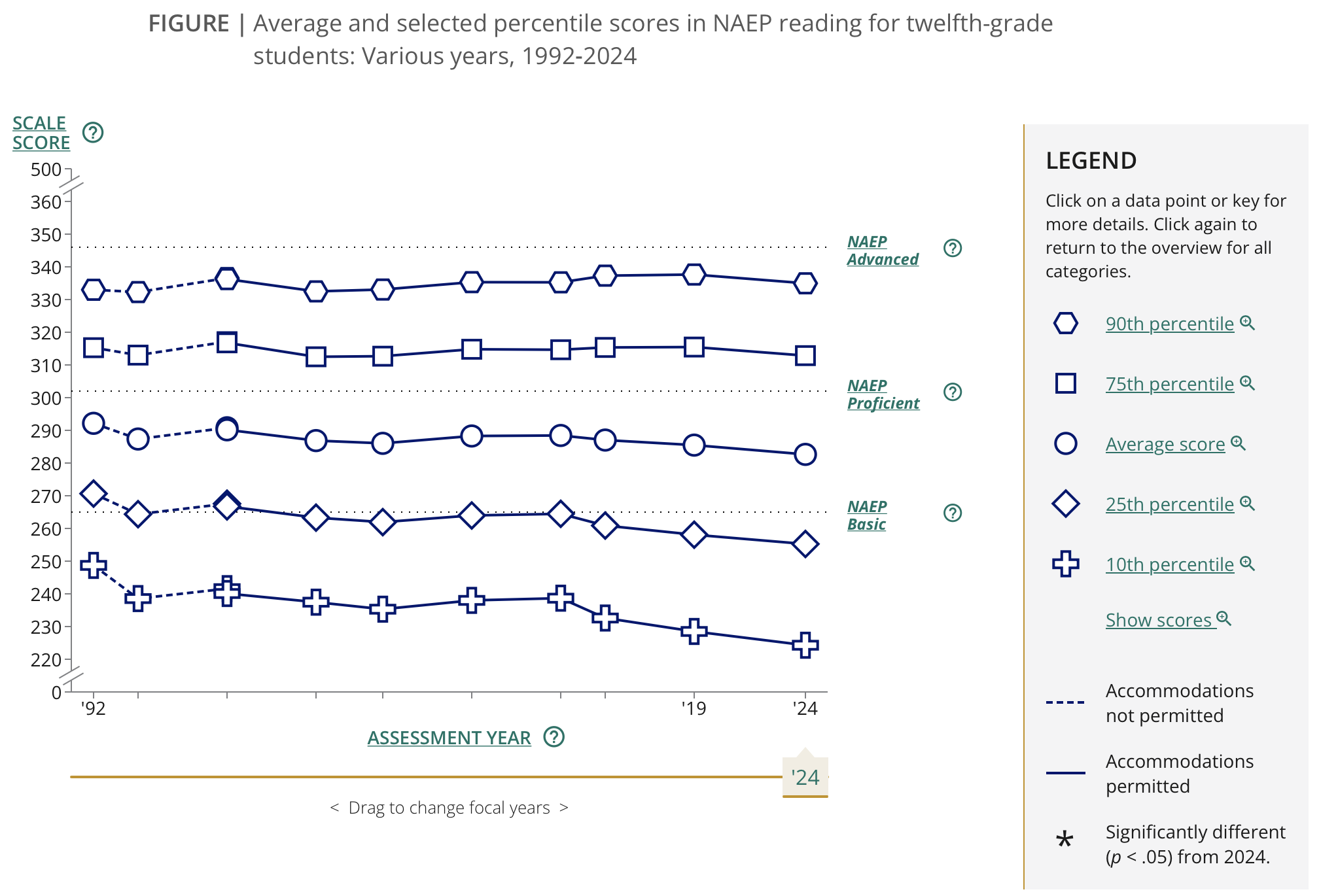Jump to: Top Tasks | From the Field | Key Resources | Moments of Resilience
It is week 270 of our new reality and we are thinking about how we talk about the state of ed reform.
“What happened to learning as a national priority?” Dana Goldstein asks in a provocative new article for The New York Times. In the piece, which is illustrated with a pencil flying a white flag of surrender, Goldstein takes the reader through the timeline of “How Education Reform Died” from the backlash against Common Core and teacher evaluations to the repeal of the key provisions of NCLB and RTTT to the rise of educational culture wars. It ends on a hopeful note by putting the spotlight on some of the classrooms that have adopted stronger curriculum and promoted a distraction-free environment.
But what gets lost in juxtaposing the emergence of these fledgling classroom-level experiments with the decline of federal leadership is just how much policy change is currently underway all over the county right now. Indeed, the “death of ed reform” is everywhere except where it really matters: in the statehouses where 90 percent of education policy is made.
SUBSCRIBE
This year in Tennessee, for example, the legislature invested $244 million more in its money-follows-the-child funding formula (TISA), $146 million in its new educational scholarships program, $27 million for summer learning programs, $20 million for charter school facilities, and $5 million to create a loan fund to help charter schools afford to borrow to build or buy facilities. This builds on last year’s session where they incentivized districts to spend money on academic programs with proven results, ensured AP access for all and required that all 3rd graders who are not proficient in reading get free tutoring to help catch them back up.
This year in Georgia, the legislature banned cellphones in elementary and middle schools, prohibited “three-cueing” in the teaching of reading, invested $19 million in literacy coaches to help teachers align their teaching with the science of reading, invested $13 million to expand afterschool programs and created new rules to incentivize districts to support the growth of high-performing charter schools. This builds upon last year’s session where the legislature increased funding for charter schools and improved the state authorizing system, provided more money for literacy screeners, created the state’s first ESA and passed a suite of career pathways bills that gave companies more flexibility when hiring apprentices, made it easier for students to fast-track their education through dual enrollment credits, and improved alignment of school certificate programs with high-demand jobs.
Meanwhile in Louisiana, they are currently debating a large package of education policies that will create a charter school revolving loan fund, provide $30m for tutoring, develop a comprehensive data system to understand which career programs help kids get into high wage, high demand jobs, and provide training and math coaches for all K-3 teachers in the state. This builds upon last year’s legislative session where they created the state’s first ESA, mandated free tutoring during the school day for every elementary school child who is not proficient in reading and math, scaled up the state’s literacy scholarship program, and remade the state’s career and technical education system.
This is just a small sample of the policy wins inside the 11 state campaigns in the 50CAN network and an even smaller slice of the wins secured by our partner organizations working in nearly every state in the nation.
It’s a reminder that while some are drafting the obituary for education reform, state leaders are drafting the education bills that are pushing the movement into one of its most dynamic and decisive chapters yet. The future of ed reform is being built right now, one policy, one budget, one state at a time.
Last time, we dove into DelawareKidsCAN’s fight for a fair funding formula in the First State and checked out a world of open and connected learning from 9,000 feet above sea level. This week, we put a spotlight on literary reform in the Garden State and get a dispatch from the off-year elections in Delaware.
TOP TASKS
Ensure policy wins are followed by successful implementation
|
|
|
|
THE TASK OF THE WEEK IS
Make the most of off-year elections
Following recent state school board elections in Delaware, Jonathan Nikkila, Executive Vice President of the 50CAN Action Fund, writes in with an update, showing that elections of consequence still happen during political “off-years”:
“Good news out of Delaware – last week, the DelawareCAN Action Fund won four of their five prioritized school board seats up for election. That includes a seat for DelawareKidsCAN board member Donna Johnson Geist, who centered her campaign around improving Delaware’s lowest performing schools. This gives us even more student-centered champions making key decisions on improving and resourcing schools.Tactically, these successful elections started with candidate recruitment nearly a year ago. As the races came into sharper focus, the DelawareCAN Action Fund team met with candidates privately for a deep dive on policy issues, helping candidates to understand the levers at their disposal to fulfill their vision. We were excited to see the conversations during the campaign center on strengthening the school finance system and school improvement mechanisms, topics that were key to the candidate recruitment, evaluation and informing that DelawareCAN Action Fund prioritized in conversations throughout the cycle.”
Jonathan Nikkila, 50CAN Action Fund
THE TASK OF THE WEEK IS
FROM THE FIELD
|
|
Key Resources
Urban Institute explores the likely impact of the proposed Educational Choice for Children Act, showing that Black and Hispanic families, as well as families that live in cities, are best positioned to benefit from the program because of their proximity to private schools.
EdWorkingPapers examines global demographic shifts impacting primary education, noting that most countries are avoiding teacher layoffs when enrollment declines by reducing class sizes.
50CAN Policy Fellow Danyela Souza Egorov argues in City Journal that New York can rekindle academic freedom and boost achievement by embracing a broad school‑choice agenda—lifting district enrollment caps, expanding charter authorization, and green‑lighting education‑savings accounts for low‑income families.
Chalkbeat reports on a resurgence of the gender gap in math achievement post-pandemic, with new studies indicating that girls have fallen behind boys in standardized math tests, reversing previous progress.
Doug Lemov at Teach Like a Champion previews a forthcoming high‑school reading curriculum built around full‑length, knowledge‑rich books, designed to replace fragmented anthology selections with coherent texts that deepen background knowledge and advance literacy.
ExcelinEd proposes a shift from traditional seat-time-based funding to performance-based models that reward educational institutions for measurable student outcomes, such as successful transitions to higher education, employment or military service.
AEI‘s Nat Malkus and Sam Holton warn in the Washington Post that record‑high graduation rates may mask pandemic learning loss, urging states to tighten credit‑recovery rules and align diplomas with postsecondary readiness.
New America reviews state policies on educator micro-credentials, highlighting the growing adoption of competency-based certifications. Leading the pack? Arkansas and Utah.
Moment of Resilience

HawaiiKidsCAN Advocacy Director Erica Nakanishi-Stanis donned her favorite princess outfit for a fairy tale-themed conference for the Special Parents Information Network, a network that supports students with special needs and their families. Erica shared information about tutoring programs and college accessibility, while handing out HawaiiKidsCAN’s new swag: grad cap-wearing flamingos.











